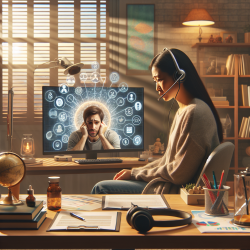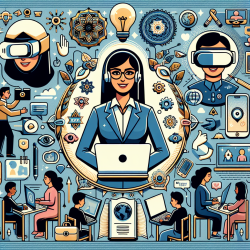The landscape of mental health care has dramatically shifted with the rise of tele-mental care, especially accelerated by the COVID-19 pandemic. The research article "Distance in Distant Care: Qualitative Content Analysis of Providers’ Experiences in Tele–Mental Care" offers valuable insights into the experiences of mental health providers navigating this new terrain. This blog post delves into the key findings and how practitioners can implement these insights to improve their tele-mental care practices.
Understanding the Forms of Distance
The study identifies two primary themes related to the concept of "distance" in tele-mental care:
- Distance Was Magnified in the Distant Encounter: Providers initially struggled with the psychological distance of adapting to telecare. This distance was further exacerbated in interactions with patients who felt insecure or distrusted the technology, making it challenging to establish rapport.
- Distance Was Bridged in the Distant Encounter: Telecare removed physical barriers for patients who would otherwise avoid in-person visits. This modality provided a "safe distance," allowing patients to share their emotions more freely and enabling providers to observe facial expressions closely via video.
Implementing Insights to Improve Tele-Mental Care
Practitioners can take several actionable steps based on the study's findings:
- Build Trust in Technology: Address patients' concerns about confidentiality and security to reduce psychological distance. Providing clear information about data protection measures can help build trust.
- Enhance Communication Skills: Develop strategies to convey empathy and understanding through digital platforms. This may include maintaining eye contact via the camera and using verbal affirmations to compensate for the lack of physical presence.
- Tailor Approaches to Individual Needs: Recognize that tele-mental care may not suit every patient. For those who struggle with the format, consider a hybrid approach that combines telecare with occasional in-person sessions.
- Leverage Technology for Better Observation: Use high-quality video to closely monitor patients' facial expressions and nonverbal cues, which can be crucial for accurate assessment and effective therapy.
Encouraging Further Research
While this study provides valuable insights, it also highlights the need for further research. The findings are based on a limited number of interviews and may not be generalizable. Future studies could explore a broader range of provider experiences and patient outcomes to develop more comprehensive guidelines for tele-mental care.
To read the original research paper, please follow this link: Distance in Distant Care: Qualitative Content Analysis of Providers’ Experiences in Tele–Mental Care.










